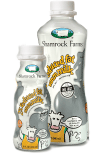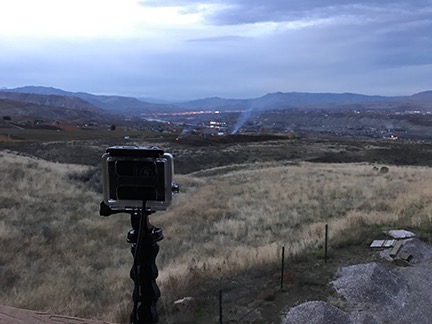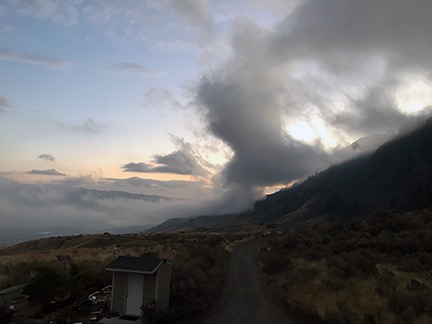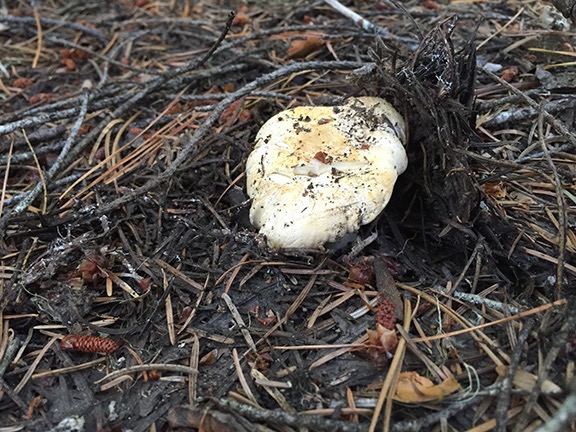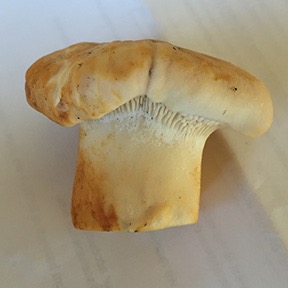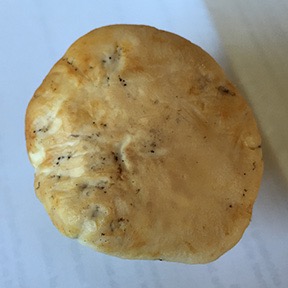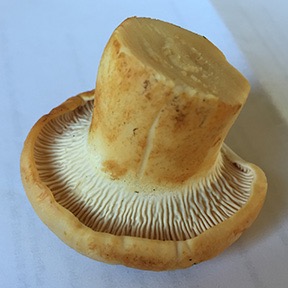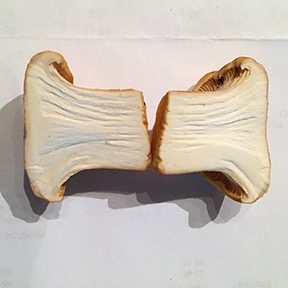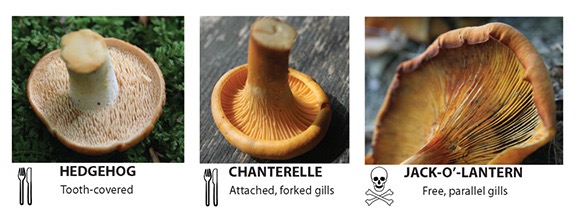Limited success and a bunch of new mushrooming resources.
Cooler weather is upon us and that means the chanterelle mushrooms are coming into season.
Last Friday morning I went out for a hike/mushroom hunt with my hiking friend, Sue. Sue knows all kinds of things about plants and animals and even rocks, so going on a hike with her is a great learning experience. And although she doesn’t eat mushrooms, her husband does and she’s always game to go hunting with me.
The Hike
We chose a trail we both like up Icicle Creek beyond Leavenworth, WA. It’s a bit of a drive — about 50 miles from my home, including more than 10 on gravel. Another mushrooming friend of mine claimed she’d found chanterelles right on the trail. I was doubtful and I think Sue was, too. So as we hiked, we took occasional forays into the forest on one side of the trail or the other, right where we thought chanterelles might grow. I did find a very nice coral-type fungus that we believe is edible; I took it with me to examine more closely later.
Then it happened: Sue found a golden chanterelle mushroom growing right alongside the trail. While she harvested it, I combed the area looking for more. She joined me. We came up empty.
I should mention here that chanterelles are pretty easy to identify. They normally have sort of misshapen caps and the gills on the underside are more like ridges or wrinkles than regular mushroom gills. They normally extend down the mushroom’s stem. You can find photos on WikiMedia. There are some “false” chanterelles and a similar looking poisonous variety called Jack O’Lantern, but it’s pretty easy to distinguish these from real chanterelles, which are prized as tasty mushrooms. If you’re interested in hunting for chanterelles, study up first and make sure you know what you’re looking for and where you might find them.
We got to a point in the trail where we were within a quarter mile of a place I’d found chanterelles the previous year and took a little detour to check it out. I walked us over to where I found them and we searched the ground. It seemed too dry. I gave up quickly and moved off to another nearby spot, but Sue stuck with it. Soon she called out “I found one!”
I hurried back. She pointed it out and I took a photo. Then we saw one nearby that was just poking out of the forest duff.
And that’s when I started seeing little mounds all over the place. Lots of young chanterelles just popping out of the ground.

A young chanterelle mushroom, just poking out of the ground.
I used my new pocketknife — I bought one with a bright orange handle so I wouldn’t lose it while mushroom hunting — to dig a few out and put them in my bag. They were all a yellowish white color with a relatively regular looking cap. I showed one to Sue and she confirmed that they were chanterelles.
We continued to hunt in that area before getting back on the trail. Sue found some other mushrooms in various stages of decay — russulas. None of them were worth keeping, even if they were of edible varieties.
We finished our hike and headed home, stopping in Leavenworth for lunch and to buy smoked meats (Cured), wine (Ryan Patrick), and cheese (Cheesemonger).
Uncertainty
If there’s a golden rule to hunting for edible mushrooms, it’s this: never eat a mushroom you find unless you are certain that it’s edible.




Several views of one of the mushrooms I harvested on Friday. When trying to get help with identification, it’s important to show as much detail as possible.
When I got home, I took a closer look at the five chanterelles I’d found. They were all smaller and much more “perfect” looking than any chanterelle I’d ever seen. What if Sue was wrong? What if they weren’t chanterelles and I ate them?
I combed through my mushroom books. None of the pictures matched what I had. I started to write Sue a warning email.
I posted some photos on Facebook, trying to see if any of my friends could advise me. Then I looked for and found three different mushroom identification groups on Facebook and signed up for each of them. I couldn’t post photos until I was approved for membership, though.
Then, as usual, I got sidetracked by something else and didn’t give it another thought until morning.
On Saturday morning, I was thinking about a chanterelle mushroom omelet. So I took my morning coffee to the computer and began searching the internet. I knew there was something called a false chanterelle, and I looked it up. That’s where I learned that false chanterelles have normal fin-like gills while real chanterelles have the wrinkle- or ridge-like gills. There was another chanterelle look-alike called a jack o’lantern that was definitely poisonous, but what I’d picked had very little in common with that. (Keep in mind that although I’m linking primarily to Wikipedia articles here, I consulted many sources.)
I finished the email to Sue and sent it. Then I kept researching. I wanted so badly to eat my mushrooms but I didn’t want to get sick. I’d been approved for all three mushroom identification groups on Facebook so I took and sent photos, including the ones you see here. I kept researching while I waited to hear back.
Around that time, I found a trio of photos on the Mushroom Forager website’s page about Hedgehog Mushrooms. It illustrated three similar mushrooms. The middle photo was almost identical to what I had.

This image, which can be found at The Mushroom Forager website, helped convince me I had chanterelles.
I started cutting up my chanterelles for an omelet.
Then I checked back with Facebook. The mushroom identification group members were starting to chime in. The first few were pretty sure that it wasn’t chanterelles. I put the mushrooms away in a container in the fridge and had an omelet without mushrooms.
Throughout the day, more responses trickled in. And this is where the group dynamics really come into play. Some were sure that they weren’t chanterelles. Some were sure that they were. So I really wasn’t any better off than I’d been before consulting the groups.
Finally, late in the day, some folks who obviously knew a lot about mushrooms started responding. They identified the type of chanterelle with its genius and species: cantharellus subalbidus. While some group members argued with them, they were firm. They provided additional information about the area in which they grow: old growth forests like the one I’d been in. One even provided a link to a page that illustrated it.
I should mention here that of the three groups I joined, the Mushroom Identification Page group seemed to have the most knowledgeable participants, although none of them were free of people who offered incorrect information based on limited facts. (I really need to do a blog post about Facebook group dynamics.)
I should mention that by this time, Sue had also responded to my email. She was certain it was a cantharellus subalbidus, too. She has some resources where she looked them up. I guess she didn’t want to poison her husband!
Feasting on My Find
That evening, I sautéed some thinly sliced veal and prepared a chanterelle cream sauce for it. I had it with a side of fresh steamed green beans from my garden and glass of sauvignon blanc. Delicious.
I finished up the mushrooms the next day by cooking them into an omelet with some scallions and buckboard bacon. Very tasty.
This was my fourth mushroom hunting trip and the second for chanterelles. (I hunted twice for morels this spring.) I marked the GPS coordinates for my find and plan to return this week. Although it hasn’t rained, I’m hoping that cool, shady area of the forest is damp enough for the chanterelles to grow.
I really enjoy collecting my own food, whether it’s foraging in the forest for seasonal mushrooms, gleaning from an orchard after harvest, tending my own garden, or collecting eggs from my chickens. There’s something very special about having that kind of connection with your food.
But best of all, you can’t beat it for freshness.


